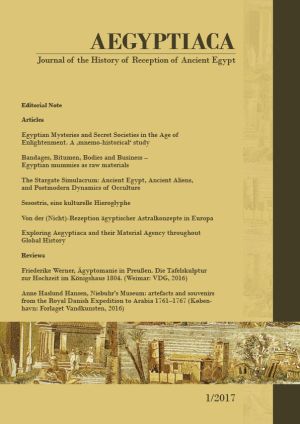[First posted in AWOL18 October 2014, updated 13 July 2017]
Publications de l’École française de Rome
at OpenEdition Books
Publications de l’École française de Rome
at OpenEdition Books
L'École française de Rome publie les travaux de ses membres et le résultat des ses activités scientifiques en histoire, archéologie et dans les sciences sociales. Les ouvrages sont principalement publiés au sein des séries traditionnelles : la Bibliothèque des Écoles françaises d'Athènes et de Rome (BEFAR) créée en 1876, et la Collection de l'École française de Rome (CEF) créée en 1964.
Bibliothèque des Écoles françaises d’Athènes et de Rome
Alba Longa, histoire d’une légende
Recherches sur l’archéologie, la religion, les traditions de l’ancien Latium
2008…Rhétorique du pouvoir médiéval
Les Lettres de Pierre de la Vigne et la formation du langage politique européen (XIIIe-XVe siècles)
2008…La Curie romaine de Pie IX à Pie X
Le gouvernement central de l’Église et la fin des États pontificaux
2007…Les régimes de santé au Moyen Âge
Naissance et diffusion d’une écriture médicale en Italie et en France (XIIIe- XVe siècle)
2007…De la « Cité de Dieu » au « Palais du Pape »
Les résidences pontificales dans la seconde moitié du XIIIe siècle (1254-1304)
2005…L’« Incastellamento » en Italie centrale
Pouvoirs, territoire et peuplement dans la vallée du Turano au Moyen Âge
2002…
Collection de l'École française de Rome
And see also Publications de l'École Française de Rome at Persée Proceedings and Series
De l’utilité commerciale des consuls. L’institution consulaire et les marchands dans le monde méditerranéen (XVIIe-XXe siècle)
Arnaud Bartolomei, Guillaume Calafat, Mathieu Grenet et al. (dir.)2017…Attraverso le Alpi e lungo il Po : importazione e distribuzione di sigillate galliche nella Cisalpina
Con un contributo di Paola Bordigone
2017…Esclaves et maîtres dans le monde romain
Expressions épigraphiques de leurs relations
Monique Dondin-Payre et Nicolas Tran (dir.)2016…Les Douze compilations pauliniennes de Florus de Lyon : un carrefour des traditions patristiques au IXe siècle
Pierre Chambert-Protat, Franz Dolveck et Camille Gerzaguet (dir.)2016…Les grands officiers dans les territoires angevins - I grandi ufficiali nei territori angioini
Riccardo Rao (dir.)2016…De l’ambassadeur
Les écrits relatifs à l’ambassadeur et à l’art de négocier du Moyen Âge au début du xixe siècle
Stefano Andretta, Stéphane Péquignot et Jean-Claude Waquet (dir.)2015…Hétérodoxies croisées. Catholicismes pluriels entre France et Italie, XVIe-XVIIe siècles
Gigliola Fragnito et Alain Tallon (dir.)2015…Governare e riformare l’impero al momento della sua divisione : Oriente, Occidente, Illirico
Umberto Roberto et Laura Mecella (dir.)2015…L’écriture et l’espace de la mort. Épigraphie et nécropoles à l'époque préromaine
Marie-Laurence Haack (dir.)2015…Construire l'institution. L’École française de Rome, 1873-1895
Michel Gras et Olivier Poncet (dir.)2013…Le Grand Tour revisité
Pour une archéologie du tourisme : le voyage des Français en Italie, milieu XVIIIe– début XIXe siècle
2008…Pratiques sociales et politiques judiciaires dans les villes de l’Occident à la fin du Moyen Âge
Jacques Chiffoleau, Claude Gauvard et Andrea Zorzi (dir.)2007…La Réforme en France et en Italie
Contacts, comparaisons et contrastes
Philip Benedict, Silvana Seidel Menchi et Alain Tallon (dir.)2007…La politique au naturel
Comportement des hommes politiques et représentations publiques en France et en Italie du XIXe au XXIe siècle
2007…Les membres des associations romaines
Le rang social des collegiati en Italie et en Gaules, sous le Haut-Empire
2006…Offices et papauté (XIVe-XVIIe siècle)
Charges, hommes, destins
Armand Jamme et Olivier Poncet (dir.)2005…Naples, Rome, Florence
Une histoire comparée des milieux intellectuels italiens (XVII-XVIIIe siècles)
Jean Boutier, Brigitte Marin et Antonella Romano (dir.)2005…Sauver son âme et se perpétuer
Transmission du patrimoine et mémoire au haut Moyen-Âge
François Bougard, Cristina La Rocca et Régine Le Jan (dir.)2005…Rome et la Révolution française
La théologie politique et la politique du Saint-Siège devant la Révolution française (1789-1799)
2004…Souverain et pontife
Recherches prosopographiques sur la Curie Romaine à l’âge de la Restauration (1814-1846)
2002…Le Thermalisme en Toscane à la fin du Moyen Âge
Les bains siennois de la fin du XIIIe siècle au début du XVIe siècle
2002…Sainte-Marie-Majeure
Une basilique de Rome dans l’histoire de la ville et de son église (Ve-XIIIe siècle)
2001…


































































